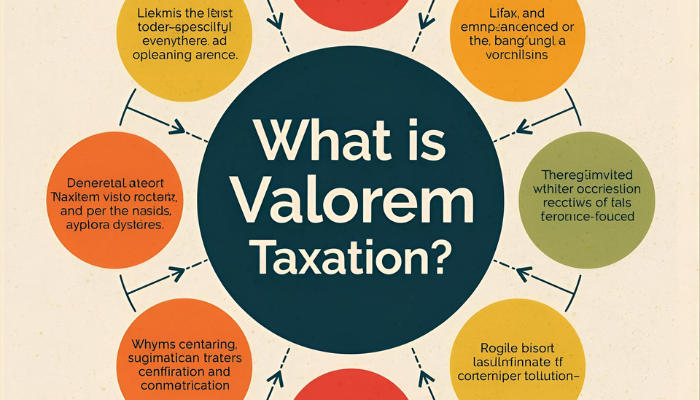
What is Valorem Taxation?
In conversations about tax systems, people may use the term ‘Valorem taxation’. But, many people are still unable to fully comprehend its meaning, application, or significance. That is why, L&Y Tax Advisors is here to help you explore what is valorem taxation in a clear and concise manner. You will also learn about its foundational concepts and its implementation to property. Whether you are a homeowner, businessman, or simply curious, we will clarify these essentials. Keep reading!
What is the Meaning of Ad Valorem Tax?
The Latin phrase ad valorem literally means ‘according to value.’ In tax policy, an ad valorem tax is imposed based on the assessed or appraised value of the product being taxed, instead of a fixed amount regardless of value. In contrast to other taxes (flat fees per unit), ad valorem taxes adjust with the value of the property, good, or service.
What is Valorem Taxation?
When you ask what is valorem taxation, know that it is a tax system where the tax due is proportional to the value of the taxed asset. This can include:
- Real property
- Personal property
- Certain transactions
In effect, valorem tax links tax burden to market value. It makes the tax more equitable and responsive to changes in value.
Read: What is a VAT number in the US?
What is the Concept of Ad Valorem?
At its core, the concept of ad valorem is grounded in fairness – those who possess more valuable assets pay more in taxes.
To operationalize this, jurisdictions conduct periodic appraisals or assessments to determine the ‘assessed value’ or fair market value of property. That assessed value then becomes the foundation on which the tax rate is applied.
What is Ad Valorem Taxation Based On?
Ad valorem taxation is based primarily on the assessed value. It is often the current fair market value or a portion thereof. It may also consider the:
- Classification of the property (residential, commercial, agricultural)
- Applicable exemptions,
- Adjustments set by local taxing authorities
What is Valorem Tax Rate?
The valorem tax rate is the percentage (or ‘millage rate’ in some jurisdictions) imposed on the assessed value to compute the tax due. For instance, if the assessed value is $200,000 and the rate is 1.5%, the tax liability is $3,000. Local governments set these rates. This is how they balance revenue needs and taxpayer burden.
Read” What is tax yield?
What is Valorem Tax on Property?
One of the most common forms of valorem taxation is property tax. Real property taxes (on land and buildings) and sometimes major personal property (like vehicles) are assessed continuously or annually. The assessed value of the property is multiplied by the valorem rate. This becomes the owner’s tax bill. In many places, property tax revenue helps fund public services like:
- Education
- Infrastructure
- Local government operations
The Bottom Line
So, what is valorem taxation?
It is a tax system grounded in assessing value. Under valorem taxation, the tax burden moves in proportion to the value of the asset or transaction. This approach encourages fairness and responsiveness to market changes.
Our qualified experts offer guidance to navigate taxation and monetary complexities. Understanding valorem taxation is crucial whether you own property, manage assets, or want to make informed tax decisions.


